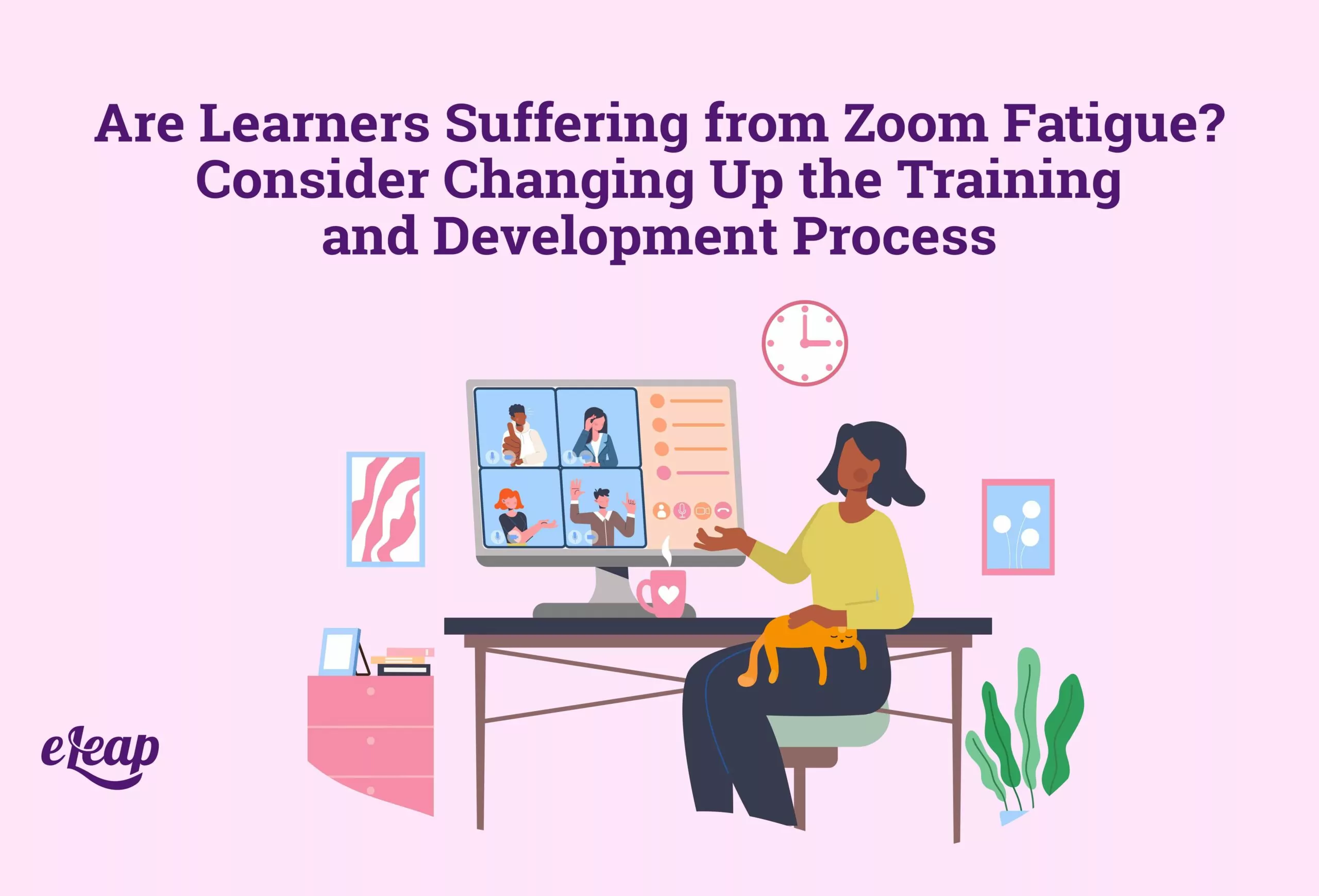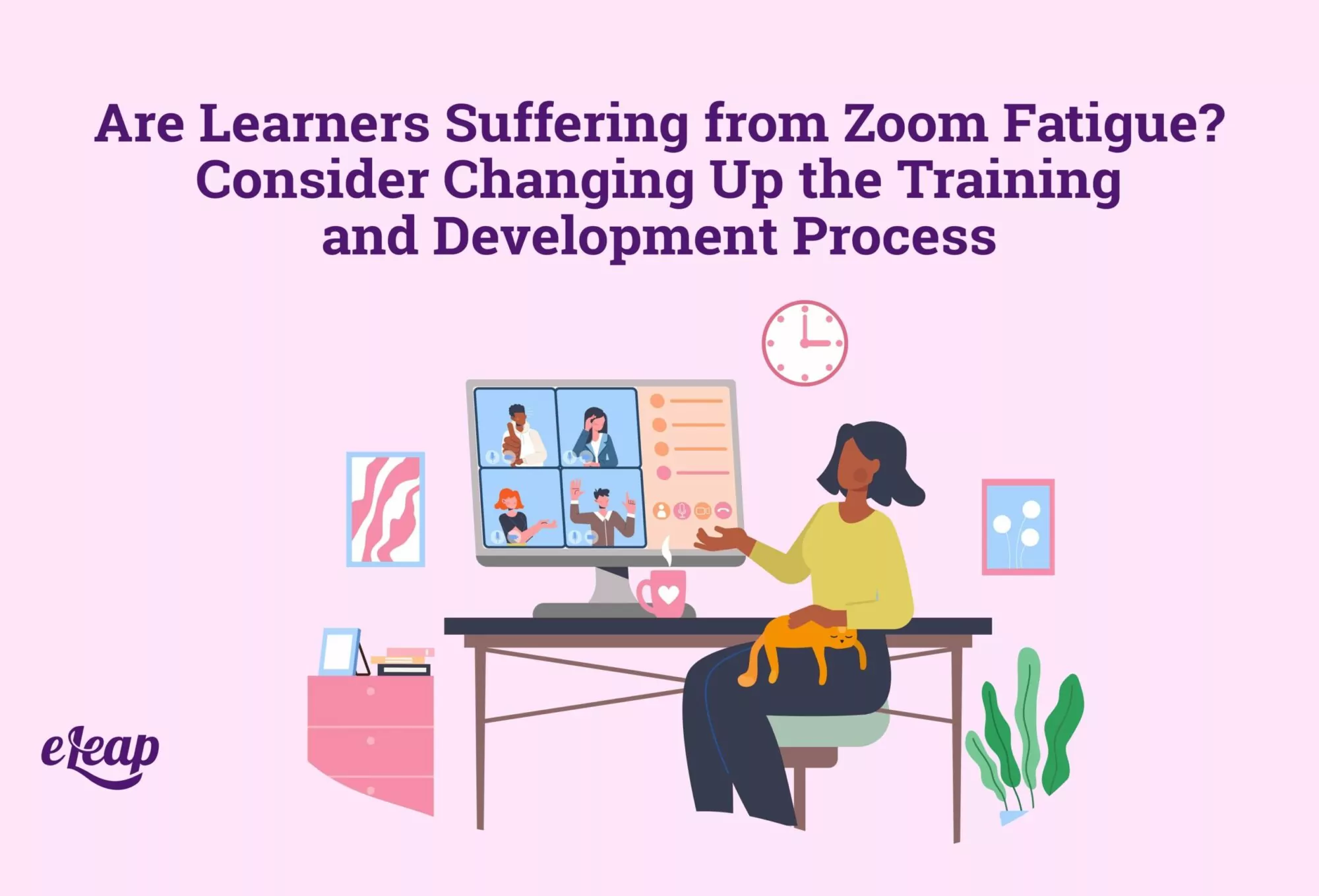Are Learners Suffering from Zoom Fatigue? Consider Changing Up the Training and Development Process

Companies that have transitioned to remote work have also had to transition to remote training and onboarding training and development Process. Finding the right resources to do that is not always a simple task. While Zoom leaped in to save the day for several schools and businesses around the world when COVID shut everything down, it’s now become such a common tool that the question of burnout has arisen.
Just as people can’t sit in classrooms for endless hours and listen to teachers drone on about a subject, they also can’t sit in front of a screen and try to learn. It’s far too easy for these habits to transfer though, and Zoom fatigue is starting to become a serious conversation topic. Can companies and schools still use this tool in new and innovative ways, or perhaps limit its use and choose a more dynamic LMS with other learning options and modules?
The key, as many have figured out with most things related to remote learning and development, is agility and a willingness to be open to that concept. Companies can claim to be agile, but when it comes to implementing changes or making agile moves, they balk and try to reason their way out of it. This cannot be the way that businesses handle learning and development. Nor can it be the way for schools and educators. Students and learners of all ages need a dynamic learning environment. In the virtual world, that comes from a customized LMS, or learning management system.

Always Look for Development Opportunities
The biggest change is that managers and business leaders must now be paying attention to the future potential for development and learning processes that can benefit learners and the organization alike. It comes down to having the mentality that you are always on the lookout for the next best thing for the team, and in the learning management system space, that’s constantly changing.
When people get comfortable, they get stagnant. Some get complacent. And in today’s workforce, there is no place for those people. Nor will they stick around. Those who do will be the ones that are least valuable to the organization because they’re not giving their all. They’re merely accepting the role they’re in because it’s easy and comfortable. Their lack of motivation or ability to challenge themselves is spurned by an organization that has a static, standard training and development process plan that doesn’t really do more than give people the same basic company education and development tools.
Feedback Can Lead to New Options for Learning
One of the best ways organizations can facilitate the best learning and development through their LMS and other tools is by knowing what employees need. That comes by taking the time to get feedback about the current L&D strategies and see what training elements are working and which could use a refresher.
Organizations that have simply taken their existing content and turned it into virtual coursework with endless Zoom meetings and videos to watch aren’t embracing all that an LMS offers—quite the contrary. The digital space is creating a whole new world of potential opportunities for learning and development both in the workplace and for educational organizations. Smart, forward-thinking organizations are the ones who are embracing this to create new strategies that cater to dynamic learning.
Some organizations think their training is satisfactory, or perhaps even good. Many of those in leadership don’t see the flaws in the system because they’re looking from the wrong perspective. No longer is the form-fill, standard issue training good enough. You have the option to customize learning in a way that it can be curated to the needs of each learner. Not taking advantage of that and relying solely on Zoom for collaboration and training means that you’re missing out on tons of potential.
Consider More Asynchronous Training Opportunities
Embracing the modern LMS means taking advantage of all the elements. One of those is the increased availability of asynchronous learning and development that can be done at a user’s pace and even based on specific roles within the organization. While synchronized training and development process meetings and courses will be necessary from time to time, they aren’t the only way to do things. This is exactly how Zoom fatigue, or any other type of digital fatigue, happens.
Stop thinking about compliance and the process and start thinking about how to create a system that works for all employees and provides them with the dynamic training that they need. Figure out how the modern LMS can be incorporated into your L&D plans with much more than just Zoom meetings and videos for those who are coming on board. It’s not just about bringing the learning to the employees. It’s about bringing the right L&D strategies so that people can learn and grow effectively.
The Bottom Line
Zoom fatigue is just one example of how an over-reliance on a specific technology tool can give both learners and organizational leaders tunnel vision. They see it as the only way to interact online and the best resource to use for communication, and more. After all, once you master Zoom, you can use it in several different ways so why bother learning anything else? That’s the point, though—every organization needs to embrace new technologies and learning tools for the benefit of the employees who are engaging with the training.
A more diverse, dynamic learning and training environment will be far more effective. No one likes to spend hours listening to lectures and participating in “meetings” or “events” that are really just a few people talking and the rest watching the discussion. Even if your team hasn’t complained of this yet, they will, in time. If you course-correct now and reconsider a customized LMS that features a variety of learning and development tools, you’ll see increased engagement, better-trained employees, and a more effective process for learning and development on all levels within the organization.
The eLeaP continuous performance management system provides organizations with powerful options to attract and retain high caliber team members.